What did painter Ellsworth Kelly, photographer Art Kane, wildlife illustrator Arthur Singer, and fashion designer Bill Blass have in common? They all served their country during World War II in a very unusual way. Before embarking on their successful careers, they put their artistic skills to good use as part of one of the most remarkable units in the United States Army.
Along with over a thousand other like-minded individuals with similar skill sets, their goal was simple – fool the Germans using inflatable props, fake broadcasts, acting, and whatever else they could come up with. They were the first mobile tactical deception unit in US Army history, the 23rd Headquarters Special Troops, better known as the Ghost Army.
Phantom Formation
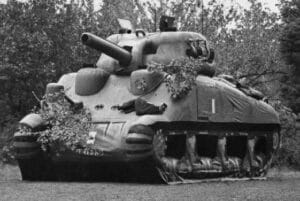
The official history of the Ghost Army was written after the war by one of its members, Captain Fred Fox, who went on to work as a freelance writer for the New York Times Magazine and as a White House staffer under President Eisenhower. Although Fox finished writing his account in September 1945, it stayed classified for over 50 years, and it wasn’t until 1996 that the world at large found out what the Ghost Army got up to during the war.
Ostensibly, the unit was the brainchild of two American military planners based in London – Major Ralph Ingersoll and Colonel Billy Harris. Of course, deception tactics had been used in warfare since ancient times, but the Americans became particularly interested in them following the British victory at the Second Battle of El Alamein in October 1942. The British forces owed their success, in part, to a “cover plan” using a “marvelous system of camouflage” which allowed “a complete tactical surprise [to be] achieved in the desert,” according to Churchill himself. After that, the American army experimented a bit with such tactics in the Battle of Tunisia, but Ingersoll and Harris felt that these efforts were all a bit slapdash and disjointed, mostly performed by pick-up detachments. What if they organized a self-contained unit created solely for deception operations? They drew up plans for it and sent them to Washington.
As it turned out, Washington liked the idea, and the 23rd Headquarters Special Troops unit was activated on January 20, 1944. In charge of this phantom army was Colonel Harry L. Reeder, the former commanding officer of the 46th Armored Infantry Regiment, 5th Armored Division. Besides command experience, Reeder also spent time studying and teaching new tactical developments, which made him more qualified for this job than your average officer. But even so, he was mostly walking into this thing blind, which became fairly clear when it was time to develop the instruction program for the new unit.
There was little literature on the subject so Reeder and the other officers had to come up with the training mostly from the ground up. Lt. Col. Clifford G. Simenson was credited with developing most of the standard operating procedures in the early days.
Speaking of training, it was done at Camp Forrest, Tennessee, and, at first, the Ghost Army was more like a Ghost Squad. When it was activated, the unit had only one officer and 57 enlisted men, not including Colonel Reeder. However, by the time it reached France, the strength of the command had grown considerably to 82 officers and 1,023 enlisted men.
The bulk of the 23rd Headquarters Special Troops came from absorbing four already-established units. There was the 244th Signal Operations Company, which mainly consisted of radio, wire, and teletype operators and acted as a counter-radio intelligence company. They would set up fake radio communications impersonating real divisions to fool any enemy ears listening in on the other end.
They were followed by the 603rd Engineer Camouflage Battalion, which was mostly composed of men recruited from the art schools of New York and Philadelphia. This battalion had been around for two years and had already employed “deceptive installations,” as they called them, during maneuvers in Louisiana and Tennessee. As the name suggests, the battalion handled camouflage and dummy equipment for the Ghost Army.
Then there was Company A, 293rd Engineer Combat Battalion, consisting of combat engineers who were expected to be at the forefront when the Ghost Army would get close to the enemy. And last, but by no means least, there was the 3132nd Signal Service Company, the only one of the units that had received separate training at the Army Experimental Station at Pine Camp, New York, before joining up with the rest of the group in France. They had been trained specifically in using the army’s state-of-the-art, top-secret “sonic deception” equipment.
By April 1944, the Ghost Army began making preparations to head to England. An advance party consisting of seven officers left on April 10, while the main body traveled to New York where it boarded the USS Henry Gibbons on May 2 and sailed across the Atlantic Ocean. They arrived in Bristol 13 days later and already it seemed that Lady Luck was shining on them. The night before they disembarked, German planes had bombed the city. If the ship had been a little faster, the Ghost Army might have been taken out of commission before it even had the chance to prove its worth.
D-Day Deceptions
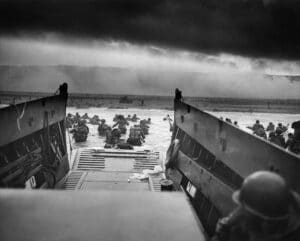
Truth be told, it took a while for the Ghost Army to show its value. When D-Day came around on June 6, half of them were still in England and the other half was safely removed from most of the action in the camps at Ecrammeville and Rubercy. Initially, the plan was for the unit to do some phony “Q lighting” during the first nights following D-Day to draw the bombing away from real targets. However, there were so many lights all over the place that, ultimately, it was decided that their attempt would be a mere drop in the bucket and not worth the effort. So the Ghost Army spent that time mostly doing prep work. The radio operators listened in on real communications between the other units to get the lingo down. The actors studied the soldiers to learn the mannerisms and get acquainted with the “atmosphere.” The props guys made copies after all the military signs, patches, and bumper markings they could find. Even the officers did field reconnaissance to learn the terrain and the combat units and to alert other divisions that they might be up to some shenanigans in the area.
Other than that, June was a quiet month for the 23rd, but it wasn’t for lack of trying. They went up and down Normandy trying to find things to do, but it seems that the initial stage of the liberation of France simply did not lend itself to deception. At least that’s what the top brass thought, so the Ghost Army was told to stay put until their services would be required. So even in the middle of the war, artists still struggled to find work.
It wasn’t until almost a month later, on July 1, that the Ghost Army undertook its first proper mission – Operation ELEPHANT. Unfortunately for them, it was an escort mission and those are almost always boring. The unit followed the 2nd Armored Division around and covered its tracks when it left a reserve position to go into the line by substituting the real tanks with inflatable dummy ones so the Germans would think that the 2nd Armored was staying put when, in fact, it was charging to attack. That was it. No sonic deception, no acting, no duplicate markings, and just one fake radio broadcast. Then, on July 3, the 3rd Armored Division arrived where the 2nd used to be so the Ghost Army packed up their tanks and left.
Okay, so ELEPHANT wasn’t a thrilling success, but it can at least be looked upon as a good learning experience. The Ghost Army learned that lack of proper communication between them and command hampered their deception efforts, and caused them to be late or not have the right supplies. But then they reasoned that even the men inside the unit were often unsure of their needs, capabilities, and limitations. This meant that the rest of the Army was even more clueless, so they appointed liaison officers, or “Deception salesmen,” as they called them, to offer up and better coordinate their services.
Furthermore, the Ghost Army needed improved communications with the other units they were working with, so liaison officers were deployed to them, as well. During Operation ELEPHANT, the real 2nd Armored Division made no attempts to hide its movements or disguise its identifying markings. Enemy ground agents were on the lookout for such markings to establish an accurate Order of Battle for the U.S. Army.
There was also an issue of inadequate supplies since the unit barely had enough dummies for one division, so their salesmen downplayed this tactic whenever they advertised their services. We know that the pictures of soldiers carrying inflatable tanks made the Ghost Army famous, but the truth was that they didn’t use this deception too often during their 20+ missions. Not only was it hard to do, but there was also no need. Inflatable props were best used to fool the Luftwaffe. However, since the Allies quickly gained air superiority, there was nobody to trick, at least not until the Germans launched their counteroffensive in the Ardennes.
Successful Shenanigans
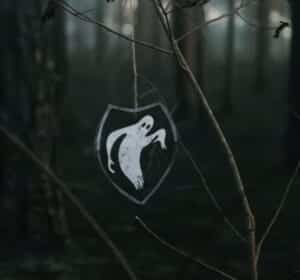
That was it for July. Just like before, it was over a month before the 23rd was needed again, and, despite what we just said, it was for their inflatable dummies. The other officers were still unsure of what the Ghost Army could do, and, for many of them, they were still just the guys with the fake tanks. During Operation BRITTANY, between 9 and 12 August, the Ghost Army divided itself into four task forces, each one meant to simulate a combat column from separate divisions. The goal was to travel in different directions to the actual divisions and trick the Germans into thinking that the Allies were diverting forces from the main battle position to take the Brittany peninsula. Whether or not they bought it, we can’t say, but we do know that the phony columns misled their own allies a few times, who had to call in just to be sure where the actual divisions were located.
The Ghost Army had one more mission towards the end of August – Operation BREST. This time, the goal was to help three infantry divisions from VIII Corps capture the port city of Brest. The unit wasn’t meant to do any actual fighting, but just to show an overwhelming display of force in the hopes that the Germans would surrender. The bluff didn’t work, though, because the Germans also had more soldiers than their enemy estimated, and they carried real guns, so they kept fighting for 27 days before being defeated.
The mission might not have played out as intended, but the Ghost Army did deploy its tactics successfully and it marked the first time that it used sonic and artillery “flash” deceptions to mimic the movements and actions of real tanks that tricked friends and foes alike. After his surrender, German General Hermann-Bernhard Ramcke admitted to thinking that he was going up against an armored division when, in fact, it was just a lot of noises and hot air. On the side of the Allies, Colonel Cyrus Searcy, VIII Corps Chief of Staff, noted in his report that “the work of these deception units is complete, thorough and correct to the smallest detail. It is believed that units of this type are of considerable value to the Army.”
Another mission came a few weeks later – Operation BETTEMBOURG. On September 14, the Ghost Army was sent to Luxembourg to play the role of the 6th Armored Division and draw enemy pressure away from Metz where the XX Corps established its headquarters. They were getting better and better at it. Besides the usual dummies, markings, and sounds, the Ghost Army started employing its actors to pose as military police and even officers. They would go into towns, grab a bite to eat, have a few drinks to loosen their tongues, and spread gossip about their movements because they knew that, eventually, their words would reach the ears of German spies. It was important for them to have the correct markings and to know the real history of the divisions they were impersonating because they never knew who was listening or taking pictures, so they needed to appear legit at all times to avoid blowing their cover.
Operation BETTEMBOURG was deemed a success, and right after the Ghost Army was called upon in Luxembourg City. Nothing fancy this time – just like Operation ELEPHANT, the goal was to make it seem like an armored division had stayed in place while the real one traveled to Malmedy in Belgium.
Bamboozle at the Bulge
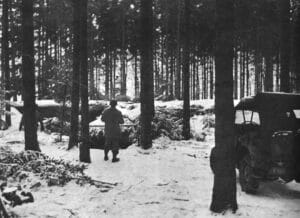
With each successful mission, the other divisions began to understand and appreciate the value of the Ghost Army more and more. In November, the 23rd Headquarters Special Troops met with a new challenge when it was assigned three missions at the same time – Operations ELSENBORN, CASANOVA, and DALLAS. All three involved the Ghost Army impersonating different divisions – two infantry, one artillery – so that the real ones could move to another position without the enemy knowing.
All three tasks were executed successfully, although we can’t say if they actually deceived the enemy. As with most of their missions, the Ghost Army had no accurate gauge for the impact of their actions since they couldn’t just ask the Germans to fill out a questionnaire, but they usually felt they did a good job when they managed to fool their own side. In the case of Operation ELSENBORN, where they set up a fake checkpoint for the 9th Infantry, even officers from the real division showed up at the phony barracks before they realized they were surrounded by unfamiliar faces.
After that came another calm month for the 23rd, but things were about to get a lot livelier. The reason the Germans had been quiet the last few months was not because they were ready to give up, but because they were preparing for a major counteroffensive in the Ardennes Forrest – the Battle of the Bulge.
As the Nazis began descending on Luxembourg where the 23rd was based, the unit packed up its rubber equipment and got out the real guns to shoot at enemy planes during the night. It was the first and only time that the Ghost Army shot actual bullets at the Germans. Soon after that, the 23rd retreated from Luxembourg City not because of any imminent danger, but because so many fighting reinforcements arrived that it was getting a little crowded.
That’s okay because on December 22 the Ghost Army was given an actual mission – to duplicate the presence of the 80th Infantry and 4th Armored Divisions so that the Germans would be unsure where the real attack was coming from. It was short notice so the 23rd only had time to get out their radios – no fancy stuff.
The New Year started with the Battle of the Bulge still in full swing and required most of the military resources of the Allies. This included the Ghost Army which had its busiest month yet. The unit undertook five missions in January 1945. Four of them were cover jobs – pretending to be other units while the real ones moved to a new position. The fifth one – Operation FLAXWEILER – was a short diversion where the 23rd used sonic equipment to mimic an armored division crossing a river while the real XII Corps crossed it 19 miles further down south. This one we can say was definitely successful because the following morning the Germans rained down artillery on the empty field.
Final Frauds and Flimflams
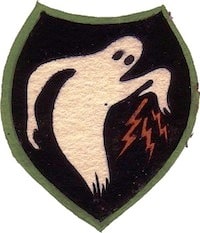
By February, the German offensive had been neutralized but the Allies had sustained heavy casualties. Keen to press the advantage and launch the invasion of Germany, it was all hands on deck. Almost immediately, the Ghost Army was put to work on Operation WHIPSAW in early February.
This was a mission in two parts. The sonic crew had to project the sounds of three tank battalions traveling through the night. This was done in the same place where they just played Operation FLAXWEILER so the Ghost Army was starting to see repeat gigs. Meanwhile, the dummy crew set up fake artillery and camouflage in a place formerly occupied by real batteries. The sonic worked well and was quickly becoming the sharpest arrow in the Ghost Army’s quiver. Once again, it diverted enemy artillery and mortar fire, as well as reconnaissance planes. The dummies, on the other hand, seemed to hold no interest for the Germans.
Soon afterward, the sonic squad was requested again, in the German town of Merzig. This time, the 23rd was going up against the 11th Panzer Division…maybe. The Allies weren’t entirely sure where the 11th Panzer was located, but they had a decent idea that it was somewhere near Remich in Luxembourg. Just in case they were there, the Allies wanted them to stay put instead of going to Germany, so the 23rd simulated the sound of an American armored division near Merzig to deter any incursions. Once again, increased enemy artillery fire and planes dropping flares suggested that the Germans thought they were fighting a real tank unit instead of a phantom one.
In March, the 23rd was requested by one of its regular customers, the XX Corps, to take part in Operation LOCHINVAR. This was a bit of a juggling act using three infantry divisions, but the main goal was to relieve the 94th without the enemy knowing they had done so. So the battered and bruised 94th would be replaced by the 26th for some well-deserved rest, while the 26th’s old position would be covered by the fresh-as-daisies 65th, and the Ghost Army was meant to make it look like the first two infantries simply switched places instead of tagging out.
If all went well, then the Germans would be fooled into thinking that they were still fighting three divisions instead of two, but they didn’t have the patience to let the Ghost Army finish their little game of hot potato. When they heard the chatter about divisions on the move, instead of working out who was going where, they just decided to attack and sort that stuff out later. So the Ghost Army got caught in the crossfire and had some of their props and spoof radios destroyed.
Things went from bad to worse for the 23rd as it launched into a new op called BOUZONVILLE immediately after. This time, it was a diversion mission meant to draw attention away from Trier and Saarburg where the XX Corps was preparing its main force by simulating a buildup of forces further south near Saarlautern. So on the night of March 12, assisted by the real 65 Artillery Division, the Ghost Army went all out: they installed their spoof radio net, they got out their rubber vehicles and played their tanks greatest hits, and used their special effects to mimic the presence of the 80th Infantry.
This allowed the real 80th to launch a surprise attack on the morning of March 13, so the mission was a success, but it came with a hefty price for the Ghost Army – two of their men were killed and 15 were wounded when the Germans attacked their position.
Little did the Ghost Army know that the war was nearing its end and only had one more mission left. However, in true showbiz fashion, they went out with a bang, as Operation VIERSEN was, undoubtedly, the 23rd’s greatest triumph.
In late March, the Allies launched Operation Plunder – a military action to cross the Rhine deep into Germany. It was a massive undertaking involving over a million soldiers, five thousand artillery pieces, and thousands of tons of supplies. Allied command wanted as many of them to arrive in one piece, so the Ghost Army was once again called upon to create a distraction by faking a river crossing.
The 23rd pulled out all the stops: dummies, sonic, radio, and special effects. They had a few hundred extra rubber vehicles including, for the first time, five airplanes. By this point, it had become clear that the high command understood the value of the Ghost Army’s tactics and spared no expense when it came to supplying them. The 23rd set up around the city of Viersen, simulating the assembly areas of two different infantry divisions. This time, there was no more doubt over the effectiveness of the deception. A recovered German map with the American Order of Battle showed that they had taken the bait hook, line, and sinker. The Ghost Army even received a commendation for its role in the campaign.
Once the Allied forces were over the Rhine, it was an all-out attack. No more need for deception anymore. For a while, there was talk of sending the 23rd to the Pacific Theater to see how their shenanigans would fare against Japan. Ultimately, though, it was decided that they would best be used in Europe in alternative capacities, so the combat con unit was broken up and divided between comms units, wire platoons, code rooms, monitoring units, and regular staff.
On April 28, the 23rd was officially relieved of all responsibilities and, from then on, it was just paperwork and red tape. The men boarded the General O.H. Ernst from Le Havre on June 23 and headed for America, arriving home in early July. The 23rd was officially deactivated on September 15, and thus, the mission of the Ghost Army that had fooled the Nazis had come to an end.



